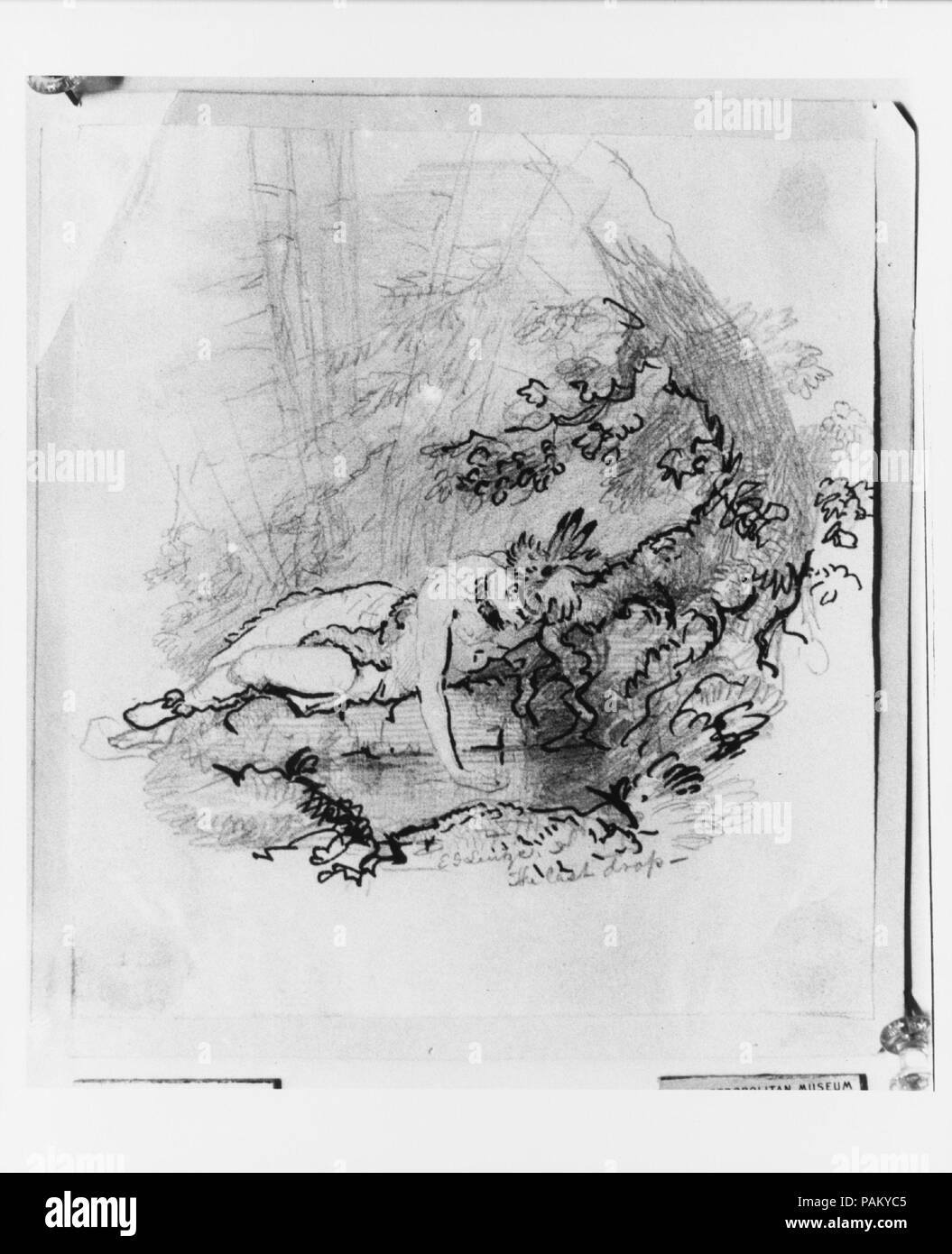The Last Drop (from McGuire Scrapbook). Artist: Emanuel Leutze (American, Schwäbisch Gmünd 1816-1868 Washington, D.C.). Dimensions: 5 5/16 x 4 7/8 in. (13.5 x 12.4 cm). Leutze is best known for his large-scale history paintings such as "Washington Crossing the Delaware". He was interested in American Indian subjects throughout his career, and in this sketch he imagines a lone figure drinking from a forest pond. The Indian's pose recalls the Hellenistic sculpture known as the "Dying Gaul" (Museo Capitolino, Rome). This classical reference reinforces the impression of the contemplative Indian a

Image details
Contributor:
Album / Alamy Stock PhotoImage ID:
PAKYC5File size:
19.6 MB (729.9 KB Compressed download)Releases:
Model - no | Property - noDo I need a release?Dimensions:
2357 x 2902 px | 20 x 24.6 cm | 7.9 x 9.7 inches | 300dpiPhotographer:
AlbumMore information:
This image could have imperfections as it’s either historical or reportage.
The Last Drop (from McGuire Scrapbook). Artist: Emanuel Leutze (American, Schwäbisch Gmünd 1816-1868 Washington, D.C.). Dimensions: 5 5/16 x 4 7/8 in. (13.5 x 12.4 cm). Leutze is best known for his large-scale history paintings such as "Washington Crossing the Delaware". He was interested in American Indian subjects throughout his career, and in this sketch he imagines a lone figure drinking from a forest pond. The Indian's pose recalls the Hellenistic sculpture known as the "Dying Gaul" (Museo Capitolino, Rome). This classical reference reinforces the impression of the contemplative Indian as a "noble savage, " a popular Romantic concept during the mid-nineteenth century. Museum: Metropolitan Museum of Art, New York, USA.